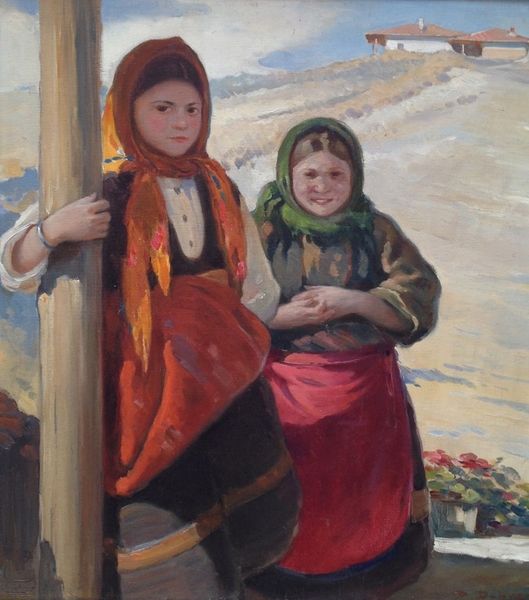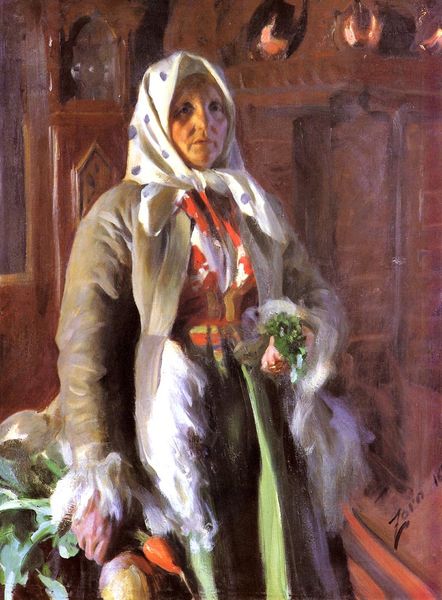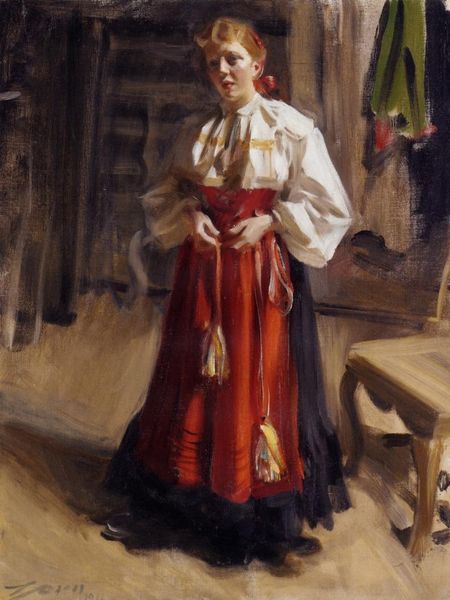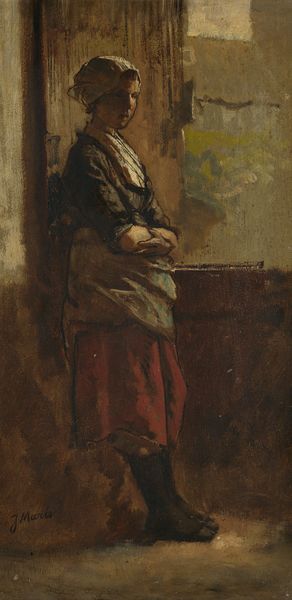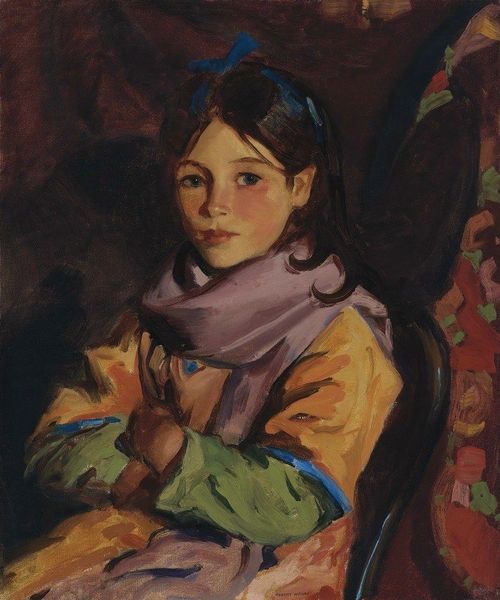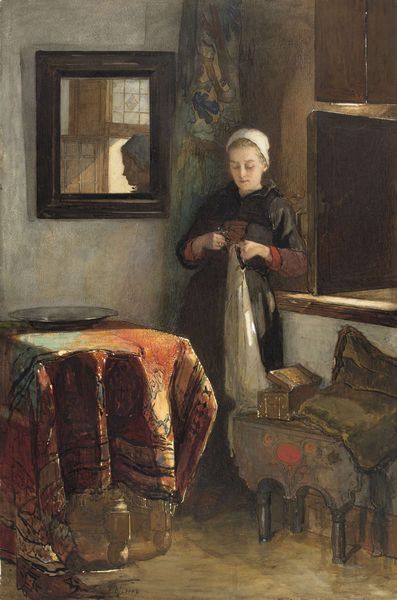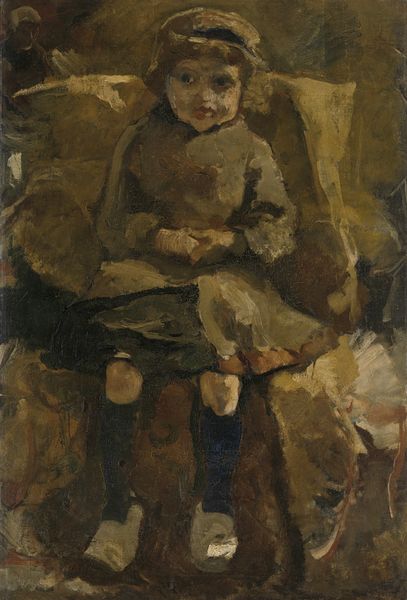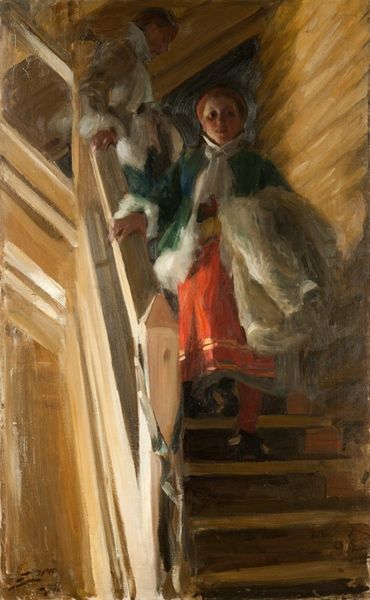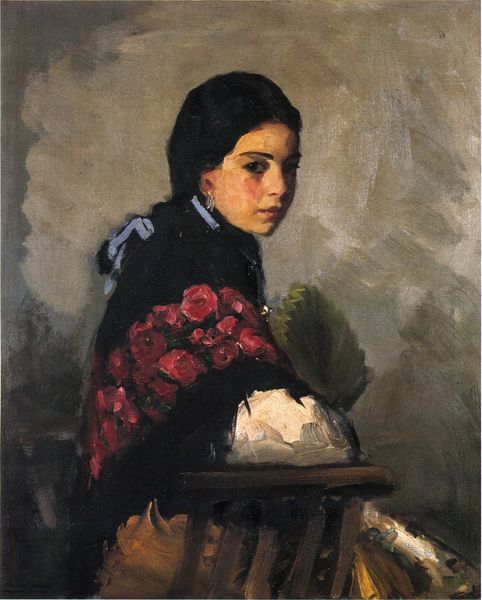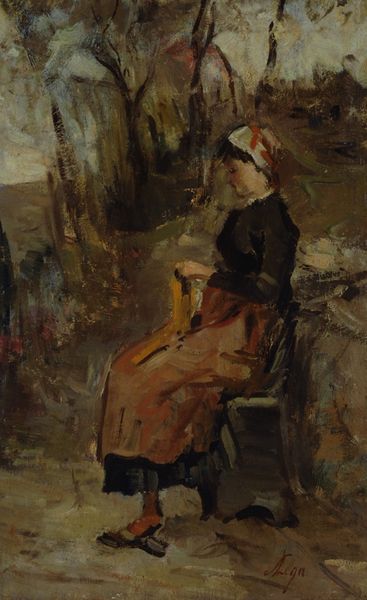
painting, oil-paint
#
portrait
#
painting
#
impressionism
#
oil-paint
#
oil painting
#
romanticism
#
genre-painting
Copyright: Public domain
Curator: This painting is called "A Girl from Mora," by Anders Zorn, rendered with oil paints. What are your initial impressions? Editor: Immediately, I'm struck by the intimacy of the scene, but also the sort of quiet solemnity. The palette feels earthy, grounded, even though there are vibrant pops of red, green and white. There is also this tension with labor in the domestic space which usually implicates gender dynamics. Curator: I see it too. Zorn clearly emphasizes this quiet domestic scene and, from my understanding, sought to immortalize and record the old folkways. He was extremely passionate about preserving elements of the rural culture that he witnessed disappearing during his lifetime. Looking closely, don't you get a feel of history? The composition places the figure slightly off-center, with what seems like the tapestry hung up in the back as the centerpiece, but she looks directly out and confronts us with modernity. Editor: It's true. We cannot deny that in romanticizing rural culture, there's always a risk of idealizing what labour looks like. And that can become a problem because then labour turns to fetishization that blinds us to other parts of this girl’s identity and story. Does it strike you as an imagined scene? Curator: It is unclear whether he’s capturing a real moment or idealizing folk life. And maybe, in Zorn’s mind, it's both. But either way, he certainly makes symbolic choices here. Do you notice that despite all those neutral colours, she wears such incredibly striking red stockings? And even has that vivid red ribbon tied on her head? Red can represent the passion and heart, but it’s equally associated with sacrifice, blood and danger. She also presents an impassive and indifferent demeanor. Editor: I suppose it forces us to reconcile idealized representations of labour with a complex reality that young women confront regardless of where they live or when they were alive. Curator: I think you're absolutely right, we're always navigating a negotiation between tradition, identity and culture. Even the materials of the work and the clothing signify the moment in time. What do you take away as we step back from this quietly powerful piece? Editor: For me, this prompts critical questions about what elements of visual language shape a viewer's engagement with a work and complicate how we experience the artwork, bridging history with our modern values. Curator: I find myself dwelling on what images of ordinary daily life preserve for those who come later. We may see it with different eyes, and bring different questions to bear, but Zorn captured something about this young woman that still resonates, still challenges us to reflect.
Comments
No comments
Be the first to comment and join the conversation on the ultimate creative platform.

